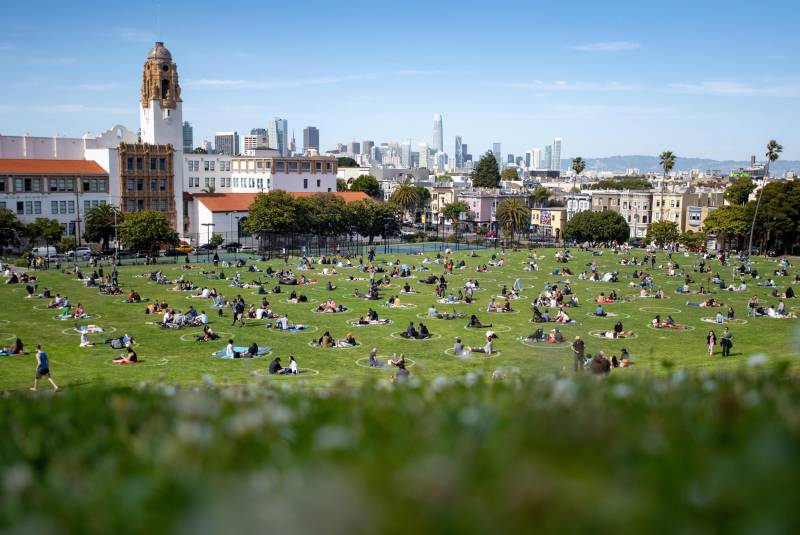Scientists say washing your hands for at least 20 seconds is another important way to protect against infection, because soap and water can destroy the virus. If you can’t wash your hands when you’re outdoors, use a sanitizer with at least 60% alcohol.
Limit Your Exposure
COVID-19 is thought to spread mainly through close contact between people. That’s why health experts say to limit how much exposure you have to people outside of your household.
In California, gatherings with people from more than three households are prohibited. State guidance is to limit these events to no more than two hours.
Some health officials say if you want to socialize, keep your group to a social bubble of 12 or fewer people, including household members, with everyone agreeing to the same rules.
Here are other ways to limit your potential for exposure:
- If possible, work from home
- Avoid mass gatherings
- Limit the number of outside visitors into your home
- When shopping for groceries, make a list to reduce time spent inside and buy extra to limit trips. Or consider a delivery service like Instacart or Good Eggs.
While the Risk Is Lower, Children Can Spread the Virus
Early research suggests kids are at a lower risk for getting sick and spreading COVID-19 — but this doesn’t mean they are immune. In some cases, children can transmit the disease.
“We’re recommending that older adults avoid contact with children,” said Dr. R. Sean Morrison, a geriatrician with Mount Sinai Health System. “We want to minimize the risk of that child passing on disease to their grandparents, who are at increased risk.”
If your kids are going in person to school, day care or other group activities, make sure your care provider is taking precautions and following state and local guidelines.
Consider Outdoor Visits Over Indoor
The CDC says indoor spaces are more risky than outdoor ones for spreading the virus.
If an outdoor meetup is impossible due to weather or other factors and you decide to meet indoors, the CDC recommends you “avoid crowded, poorly ventilated, and fully enclosed indoor spaces. Increase ventilation by opening windows and doors to the extent that is safe and feasible.”
Choose a Car Ride Over a Flight
Some health experts say driving is safer than flying, where you’ll be in tight quarters with strangers for hours. But long car trips may require stopping for gas or food, so you’ll still want to take precautions. The recommendations are that you don’t share vehicles with people you don’t live with and that everyone where a mask. You should also open windows to increase air circulation.
Before flying, doctors say it’s a good idea to check the airline’s coronavirus policies. Most require passengers to wear a mask, and some limit the number of passengers aboard a flight or block out middle seats. Remember that it’s likely you will be sitting within 6 feet of other people for hours on end, depending on where you’re traveling, plus time in airline terminals that may be more crowded over the holidays.
Get Tested or Plan to Quarantine
Health experts say getting tested, while not a fail-safe, can give you a measure of confidence. Dr. Bob Wachter, chair of the Department of Medicine at UCSF, says receiving a negative test result before your trip significantly reduces, though doesn’t eliminate, the chance you’ll transmit the coronavirus when traveling.
“If I was on the fence about visiting and I had a negative test in the last couple of days, it might get me to leave the fence and go,” Wachter said. “But it would not lead me to give them a hug and a kiss.”
A second test four to five days after your journey can help rule out infection during a flight or road trip. Getting a test immediately upon arrival, Wachter says, will likely be too soon for you to test positive. While you wait for the results, doctors recommend keeping your distance from others.
If testing isn’t an option and you have the luxury of time, experts say quarantining for 14 days before and after your travel is prudent.

